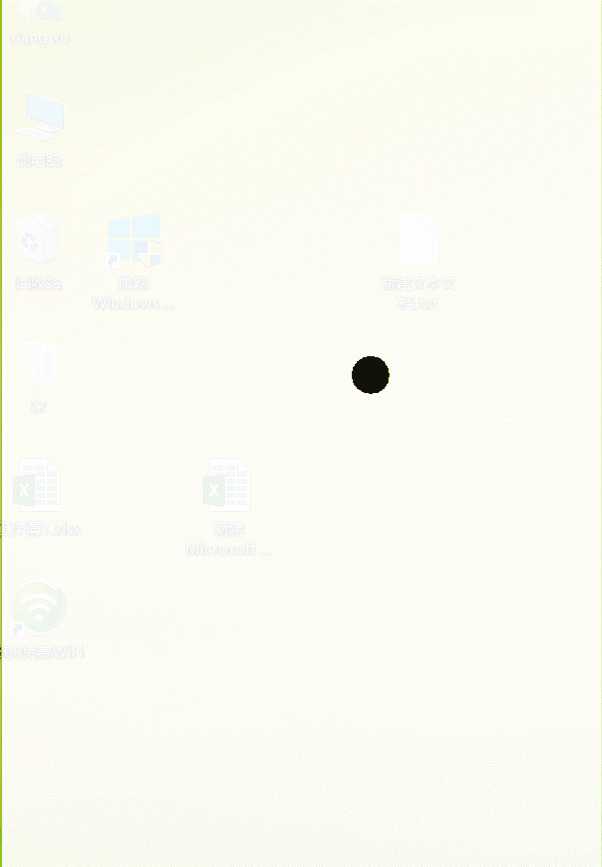/** BouncePanel.java */ import java.awt.*; import java.awt.event.*; import java.awt.geom.*; import java.util.Random; import javax.swing.*; public class BouncePanel extends JComponent implements ComponentListener, Runnable { final static long serialVersionUID = 0; // kill warning // constants final static BasicStroke stroke = new BasicStroke(2.0f); // fields int Red,Green,Blue; float xsize,ysize; // size of window float xpos,ypos,yypos; // position of ball float xlen,ylen; // size of ball float speed; // distance the ball moves in each frame float dx,dy,ddy,da; // current speed + direction of ball float temp; int t; int delay; // delay between frames in miliseconds Thread animThread; // animation thread /************************************************* * Draws the ball on the screen. *************************************************/ public void paintComponent(Graphics g) { Graphics2D g2 = (Graphics2D) g.create(); // get the current window size Dimension dim = getSize(); xsize = dim.width; ysize = dim.height; // clear background to white g2.setPaint(Color.white); g2.fill(new Rectangle2D.Double(0,0,xsize,ysize)); // draw ball g2.setPaint(new Color(Red,Green,Blue)); g2.fill(new Ellipse2D.Double(xpos, ysize-ypos-ylen, xlen, ylen)); g2.setColor(Color.black); g2.draw(new Ellipse2D.Double(xpos, ysize-ypos-ylen, xlen, ylen)); g2.dispose(); } // empty methods that are required by the GUI event loop public void componentHidden (ComponentEvent e) { } public void componentMoved (ComponentEvent e) { } public void componentResized(ComponentEvent e) { } public void componentShown (ComponentEvent e) { } /**************************************************** * Checks to see if the ball has hit any walls. * Called from within run(). ****************************************************/ public void checkWalls() { Random rand = new Random(); if (xpos + xlen >= xsize) { xpos = xsize - xlen; dx = -dx; Red=rand.nextInt(256); Green=rand.nextInt(256); Blue=rand.nextInt(256); } if (xpos <= 0) { xpos = 0; dx = -dx; Red=rand.nextInt(256); Green=rand.nextInt(256); Blue=rand.nextInt(256); } if (ypos + ylen >= ysize) { ypos = ysize - ylen; dy = -dy; Red=rand.nextInt(256); Green=rand.nextInt(256); Blue=rand.nextInt(256); } if (ypos <= 0) { ypos = 0; dy = (float)Math.sqrt(2*da*yypos+ddy*ddy); Red=rand.nextInt(256); Green=rand.nextInt(256); Blue=rand.nextInt(256); } } /* public void speed() { }*/ /*********************************************************** * This is the animation thread. * The code here is what actually causes the ball to bounce. ***********************************************************/ public void run() { while (true) { // loop forever // storage history data yypos=ypos; ddy = dy; //new Vy dy=dy + da; // update position xpos += dx ; temp = (dy+ddy)/2;//*|t=1| ypos =ypos + temp; // check to see if the ball has hit any walls checkWalls(); // sleep a bit until the next frame try { Thread.sleep(delay); } catch (InterruptedException e) { break; } // refresh the display repaint(); } } /**************************************************** * This is a constructor for the BouncePanel class. * It initializes all the values that the class needs * in order to work properly. ****************************************************/ public BouncePanel() { // set values for all the variables xsize = 480; ysize = 700; xpos = 240; ypos = 350; xlen = 30; ylen = 30; speed = 10; dx = speed; dy = speed; da = -1.0f; delay = 80; // set up window properties setBackground(Color.white); setOpaque(true); setPreferredSize(new Dimension((int) xsize, (int) ysize)); setFocusable(true); addComponentListener(this); // start the animation thread animThread = new Thread(this); animThread.start(); } }

